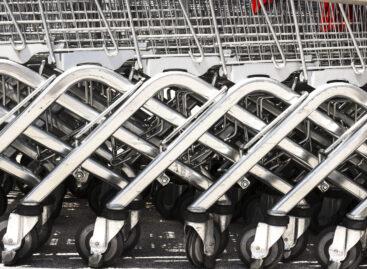Twenty years in the EU: how has Hungarian consumption changed?
On 1 May 2004 ten new member states joined the European Union, including Hungary. In connection with this, GKI has examined how the consumption of the population changed during the 20 years of EU membership.
This article is available for reading in Trade magazin 2024/4
There are basically two ways of measuring consumption in international comparisons: in absolute terms (how much we can spend abroad when we convert our money into euros) and in purchasing power parity (how much we can spend elsewhere at the price level of the country in question).
If we take a look at the former, we can see that Hungarian consumption in euro terms rose steadily after joining the EU in 2004, before the upward trend was interrupted by the financial crisis of 2008. Overall, Hungarian consumption in euro terms doubled in the previous 20 years. However, the picture is clouded by the fact that in 2022 it was still only 47% of the EU average (40% in 2004). If we look at consumption at purchasing power parity, we can observe a slight convergence. The value of the indicator in Hungary was 64% of the EU average in 2004, rising to 73% in 2022 (mainly thanks to the 2018-2020 period). //
Related news
Perceived price increase index remains high
🎧 Hallgasd a cikket: Lejátszás Szünet Folytatás Leállítás Nyelv: Auto…
Read more >The GKI business climate index closed 2025 at a one and a half year high
🎧 Hallgasd a cikket: Lejátszás Szünet Folytatás Leállítás Nyelv: Auto…
Read more >This is how humans and AI work together – the artificial intelligence revolution in the workplace
🎧 Hallgasd a cikket: Lejátszás Szünet Folytatás Leállítás Nyelv: Auto…
Read more >Related news
Christmas shock in commerce: for the first time, we can pay with bank cards in fewer places
🎧 Hallgasd a cikket: Lejátszás Szünet Folytatás Leállítás Nyelv: Auto…
Read more >Hungarian Confectionery Manufacturers Association: trends in 2025 and prospects for 2026
🎧 Hallgasd a cikket: Lejátszás Szünet Folytatás Leállítás Nyelv: Auto…
Read more >Most grocery chains will be open until noon on December 24th
🎧 Hallgasd a cikket: Lejátszás Szünet Folytatás Leállítás Nyelv: Auto…
Read more >






